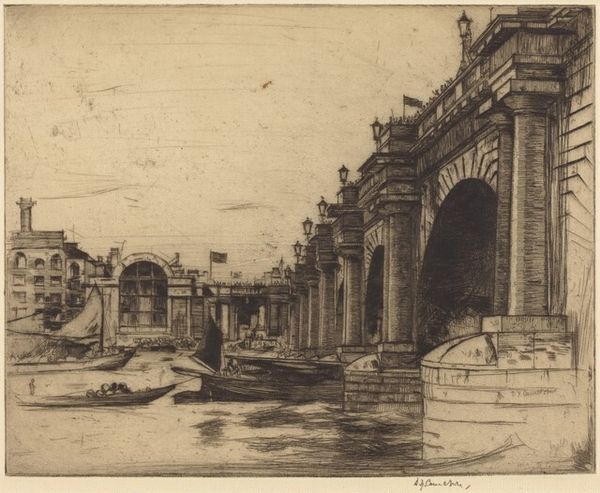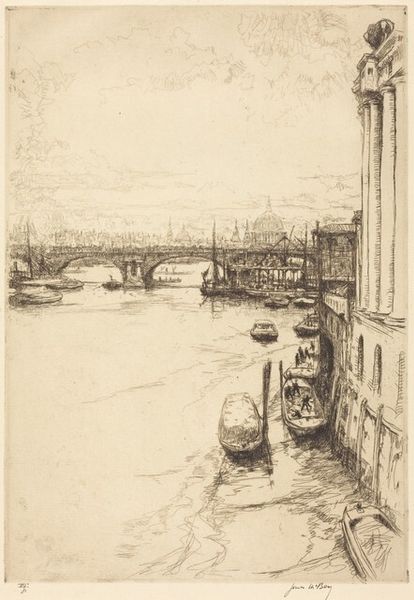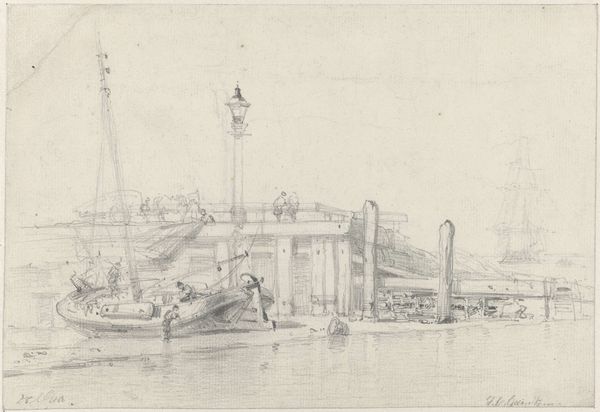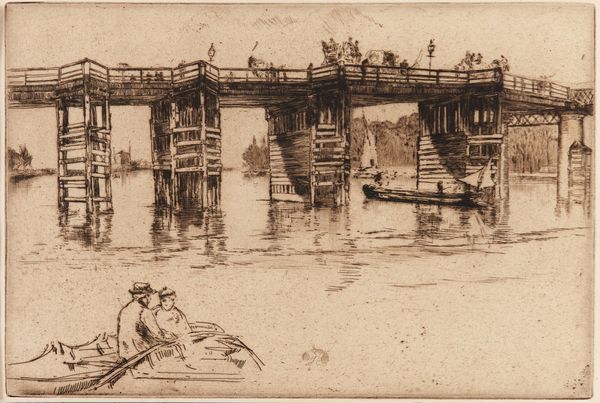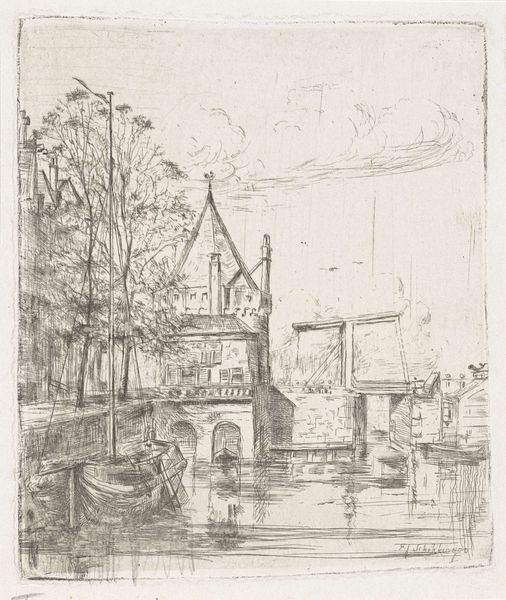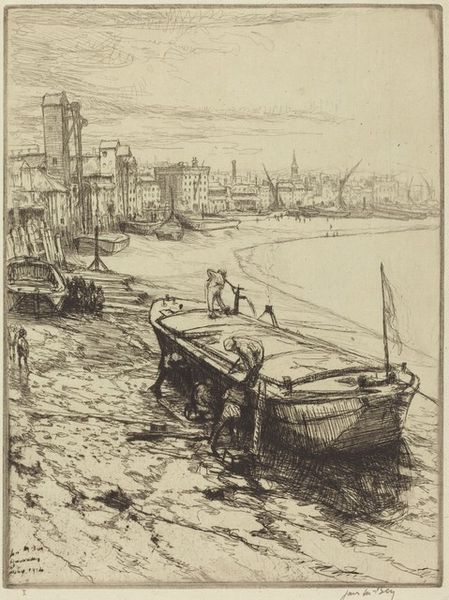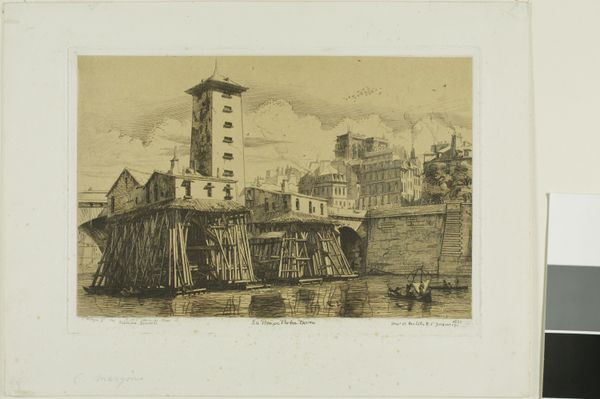
Copyright: National Gallery of Art: CC0 1.0
Curator: Let’s turn our attention to "Waterloo Bridge, No. 2," an etching created in 1899 by David Young Cameron. The image portrays the bridge spanning the Thames, offering us a glimpse into London’s industrial heart at the turn of the century. Editor: My first impression is its striking contrast. The dense, almost gothic presence of the bridge's architecture contrasts so heavily with the ephemeral, almost hazy rendering of the river and distant cityscape. You can practically feel the grit on the stonework. Curator: Exactly. Cameron, a Scottish artist, was deeply interested in architectural subjects, imbuing them with a sense of historical gravitas and a reflection on the growing modern urban experience. His prints of architectural subjects coincided with debates surrounding urbanization and the preservation of landmarks at that time. Editor: I am struck by the materiality itself—the etching. The process requires such labor and careful work with the acid to get that depth of tone and the textures in the bridge itself are fantastic. What statement was Cameron trying to make with his focus on the making process? Curator: The use of etching elevates what might seem a mere industrial scene. Etching had become more accessible to middle class artists at that time. The choice of the etching medium, during a time of photography's ascendance, also positions the artist as a skilled hand-worker and emphasizes the crafted nature of artistic representation versus the mechanical. Editor: I see your point about craftsmanship versus mechanical reproduction. Looking closer at the bridge's structure and boats traversing the river, I can sense a story of commerce, labour and even trade. You can feel the constant activity of the city. Curator: And Cameron’s ability to subtly capture that constant churn of activity with stillness reflects the bridge itself; London grew dramatically, with Waterloo Bridge symbolizing its modernity as a hub for that rapid change and progress at the time. Editor: Yes, but that's one way to look at it. Alternatively, these could be understood as records of labour and production during this period that Cameron is attempting to draw the eye towards and recognize. Curator: A thought-provoking point! Thinking more about the print within its time, it is easier to appreciate Cameron's sensitivity in capturing an environment in great transition. Editor: Agreed. Waterloo Bridge as an industrial, lived and laboured space in time, rendered in print form: that makes this work resonate with depth far beyond a mere historical record.
Comments
No comments
Be the first to comment and join the conversation on the ultimate creative platform.
